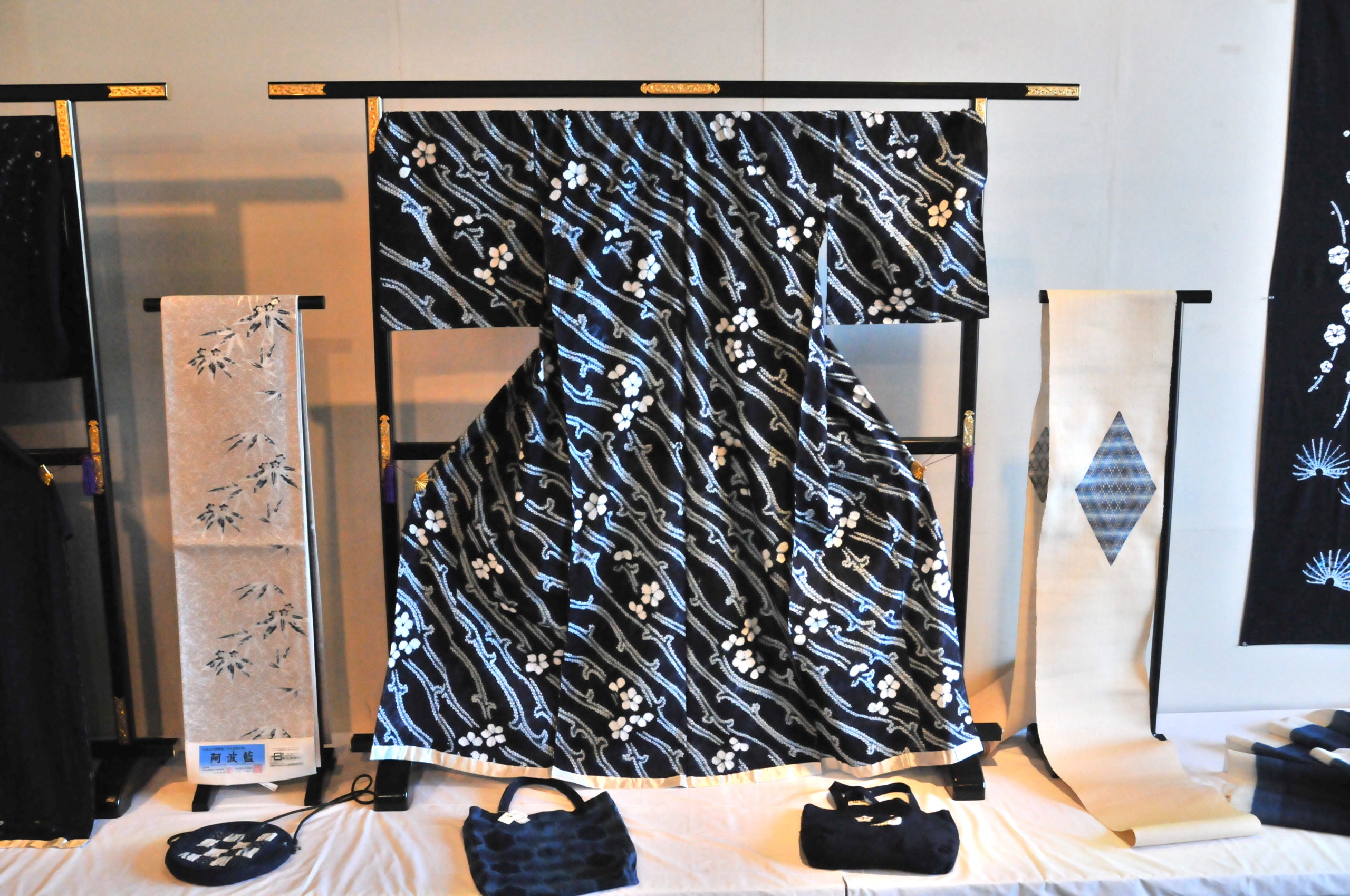阿波藍染
Pronunciation: Awa Aizome
Production area: Tokushima City, Tokushima Prefecture
Awa indigo dyeing is renowned for its deep, refined shades that become even more beautiful with repeated washing. The cultivation of indigo in Japan began around 1585, when Lord Hachisuka encouraged the introduction of Chinese farming methods. The fertile climate of the Yoshino River basin proved ideal, and Tokushima soon became the leading indigo-producing region in Japan. The dyeing process uses sukumo—indigo leaves harvested, dried, and fermented—combined with alkaline agents and natural nutrients such as glucose, left to rest for about a week to create a natural dye bath. Fabrics are repeatedly immersed in this solution, producing vivid, durable blues. Natural indigo adheres well to cotton, is resistant to sunlight and washing, and even offers insect-repellent properties. The prestigious “Shoai” (pure indigo) label may only be applied to textiles dyed with indigo cultivated in Tokushima. Today, the traditional techniques of Awa indigo dyeing are designated as an Intangible Cultural Property of Tokushima Prefecture.




















